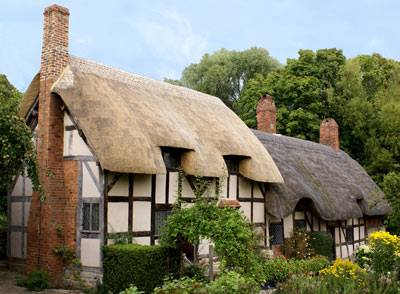
Biomass roofing is roofing made from plant material. This includes wood and thatch, and all the types of roofing made from those raw materials. Biomass roofs are generally durable and eco-friendly, but not without their cons.
Here are some of the different types of biomass roofing, and some of the characteristics of each.
Wood
There are multiple ways to use wood to create a roof. Generally, it is made into shingles, thick shingles called shakes, or tiles. Shingles are thinner because they are cut with a saw, whereas shakes are split. There are long, short, thick, thin, wide, and narrow varieties. The wood used is from hard woods like oak or cedar. In dryer areas, bamboo shingles are sometimes used.
While spaces are left between the supporting wood strips under the shingles for circulation, wood shingles do provide good insulation. They last longer than conventional tar roofing – anywhere from 25 to 50 years some sources claim (tar roofing shingles last about 10 years). Wood shingles and shakes are flammable, and need to be cleaned of vegetation periodically. Leaves, pine needles, and so forth do not shed off the roof easily.
Thatch
This ancient form of roofing has been used in various parts of the world for thousands of years. Leaves, grasses, reeds, and straw are just some of the materials used to make thatched roofs. Modern thatching usually makes use of water reeds, straw, or wheat reed. (Wheat reed is actually a kind of straw, but is cut in such a way as to resemble reeds.) Unlike the rough appearance of threshed wheat straw, reed roofs are tight and even.
Modern thatched roofs are more durable than you might think – 30 to 50 years according to some sources, and up to 70 years according to others. They repel water well and are flexible enough to accommodate just about any roof pitch and shape. And if there is damage to a thatched roof, it is easily repaired.
Because thatch is applied in layers, it is thick and therefore a good insulator. This is an ecological advantage. It is flammable, however, which is a drawback to just about all biomass roofs.
Environmentally, biomass roofs do hold great appeal. They are made from renewable, plentiful materials that are often local. They do a good job insulating and therefore reduce the homeowner’s energy use – and carbon footprint. And when biomass roofs do wear out, they are easily replaced and the old roof is biodegradable. However, if the surface of a biomass roof has been treated with chemicals to water-, fire-, or insect-proof the roof, it undermines its biodegradable status.

